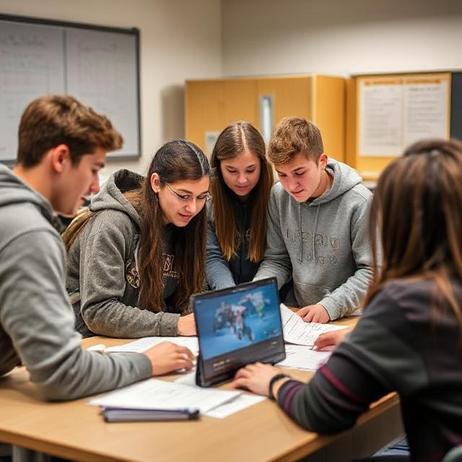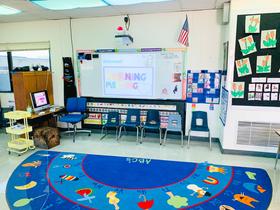Career Readiness in Public Schools: Teaching Skills Beyond Standardized Tests
In 2025, discussions about education reform increasingly emphasize that career readiness must extend beyond test scores if public schools are to truly prepare students for life after graduation. For many students, success hinges not only on algebra or reading skills, but also on communication, critical thinking, adaptability, and real-world problem solving. To close the “skills gap,” public schools must adopt new approaches and metrics—and equip educators, students, and communities for a future that values more than standardized test performance.
This article explores why career readiness matters, what skills matter most, how public schools can integrate them, and how to evaluate success beyond test results.
Why Move Beyond Standardized Testing?
The Limits of Tests as a Sole Metric
Standardized tests remain deeply embedded in public school accountability systems. Yet as critics and reformers note, overreliance on such tests distorts instruction, narrows curricula, and fails to reflect the full range of student readiness. Education Week+1 The problem is not testing itself, but making tests the final arbiter of success—even when they capture only a fraction of what students must do in life or work.
The Skills Gap & Employer Expectations
Employers routinely report that recent graduates lack key “employability” or “career readiness” skills—communication, teamwork, initiative, digital literacy, self-management. icevonline.com+1 Schools that focus narrowly on test preparation risk leaving students unprepared for their first job or further training.
A more balanced approach views standardized tests as one data point among many—complemented by authentic assessments, portfolios, project-based work, and community-based experiences.
What Is “Career Readiness”?
Career readiness encompasses the knowledge, attitudes, behaviors, and skills that students need to succeed in the transition from school to work or further study.
Key categories include:
Academic and technical skills: mastery of foundational content, capacity to learn new tools and technologies
Career exploration and planning: knowing one’s interests, mapping potential pathways, setting goals
Professional and interpersonal skills: communication, teamwork, adaptability, time management
Practical life skills: financial literacy, resume writing, interview skills
Civic and ethical competencies: decision-making, responsibility, awareness of societal context
To internalize career readiness, schools must weave these skills into curriculum—not treat them as add-ons. One promising model is the “Portrait of a Graduate” approach, where districts define the knowledge, skills, and dispositions they expect for all students, beyond test scores. Vector Solutions+1
Strategies for Integrating Career Readiness
1. Cross-Curricular, Project-Based Learning
Authentic, multidisciplinary projects allow students to apply academic knowledge while exercising soft skills like collaboration and problem solving. For example:
A high school class partners with a local nonprofit to design a community garden, requiring science, budgeting, and public communication
Middle schoolers build business plans for a student-run vending service
This aligns with the Authentic Intellectual Work framework, which encourages assignments that are meaningful beyond school and require disciplined inquiry.
2. Embedded Skill Instruction
Rather than teaching communication or time-management separately, embed these competencies within regular assignments and lessons. For example:
Requiring student peer-review cycles to enhance feedback and presentation skills
Structuring group work with explicit roles (project manager, researcher, designer)
Reflective journals or self-assessment prompts that prompt students to monitor their own progress
3. Work-Based Learning & Community Partnerships
Beyond the classroom, real engagements with industry, nonprofits, or civic organizations give students exposure to real expectations.
Internships, job shadows, apprenticeships, or mentorships
Guest speakers and site visits
Student-led service or entrepreneurial projects tied to community needs
Schools that cultivate strong community connections can embed career readiness deeply into learning.
4. Shared Leadership & Student Agency
When students and teachers co-design learning experiences, the school cultivates ownership and authenticity. Shared leadership practices (e.g., idea proposals, decision committees) can surface student voices.
5. Leveraging a Multi-Tiered System of Supports (MTSS)
Some districts align career readiness under their MTSS or RTI (Response to Intervention) frameworks, ensuring differentiated support for students developing socioemotional or executive-function skills, alongside academics. This helps avoid the “either/or” trap between academic remediation and readiness initiatives.
Assessing Career Readiness (Without Tests)
Designing authentic, diverse assessment strategies is essential to value what matters.
Educators can use these methods:
| Method | Description | Strengths |
|---|---|---|
| Portfolios / Capstone projects | Students collect evidence of projects, reflections, presentations | Holistic evaluation, growth over time |
| Performance tasks / real-world simulations | E.g. mock job interview, design challenge | Directly measures skills like communication, problem-solving |
| Rubric-based assessments | Custom rubrics for soft skills (e.g. collaboration, adaptability) | Transparent, consistent across teachers |
| Formative feedback cycles | Observation, peer and self assessment, evolutionary improvement | Encourages iteration and metacognitive skill development (TAO) |
| Digital skill-assessment platforms | Tools that monitor collaboration, decision-making, planning patterns | Provides data on student behavior beyond academics (TAO) |
Some reformers also propose integrating career-readiness indicators (like internships, credential attainment, leadership activities) into school accountability systems. Education Strategy Group
Overcoming Common Challenges
1. Time & Curriculum Pressure
With fixed instructional hours and standardized content mandates, finding space for “extra” skills feels difficult. The solution is integration—not addition. Embed readiness tasks into existing courses rather than layering new programs.
2. Teacher Capacity & Mindset
Many teachers lack training in teaching soft skills or mentoring community-based projects. Professional development, cross-disciplinary planning time, and instructional coaching are crucial.
3. Equity & Access
Students in under-resourced schools often lack access to internships, technology, or mentorship. Districts must intentionally build partnerships and allocate resources to ensure fairness.
4. Alignment with Accountability Systems
When state and federal accountability emphasize test scores exclusively, it’s harder for principals to redirect priorities. Advocacy is needed for broader accountability systems that value multiple measures of readiness.
Example: A 2025 District’s Initiative
In 2024–25, the fictional Crestview Public Schools launched a “Future Ready Pathways” initiative. Key features:
A district-wide Portrait of a Graduate defined 6 core competencies
All schools integrate quarterly project showcases where students present real-world solutions
High schools partner with local businesses to host 8-week paid internships for juniors
Teachers receive biweekly coaching on embedding soft skills
The district is now piloting a career readiness index combining academic performance, portfolio quality, internship participation, and post-secondary intent survey
Initial results point toward increased student engagement, more meaningful learning, and a shift in school culture: educators now ask not only “Will students pass the test?” but “Will they be ready for what comes after?”
Toward a New Vision of Public School Success
As public schools evolve, career readiness must become central, not peripheral. Metrics should expand beyond pass/fail test thresholds to include:
Real-world performance on projects
Demonstrated mastery of interpersonal, metacognitive, and life skills
Participation in internships, service, or leadership
Clear post-secondary planning and transition data
By centering teaching skills beyond standardized tests, districts can more faithfully serve students—especially those for whom tests do not reflect true potential. The shift isn’t easy, but the stakes are high: the future success of a generation depends on it.













